Roman Square Capitals: Prestigious Script That Delighted Human Eye With Its Elegance
A. Sutherland - AncientPages.com - We have been using this cultural achievement of the ancient Romans for at least 2,500 years.
Roman square capitals (also called capitalis monumentalis, or capitalis quadrata), are an ancient Roman form of writing and the basis for modern capital letters.
 The 5th-century Vergilius Romanus work. Source
The 5th-century Vergilius Romanus work. Source
The earliest Roman script was entirely in capitals, and in all eras, this form of writing delighted the human eye with its elegance.
To this day, the Roman square capitals can be admired on old stone inscriptions. Before the 4th century, square capitals were used to write de luxe copies of the works. The only three surviving manuscripts using this letter, among them the ‘Vergilius Augustus’, contains works by Virgil.
They look like printed today, and yet they required immensely more work than inserting a card into the printer and merely pressing ‘enter,’ as we do today.
This script – not only elegant but also beautiful – was believed to be exclusively reserved for valuable manuscripts and used for the most important and revered works such as Virgil or the Holy Bible.
Square capitals were indeed very difficult to write because of their straight lines and right angles.
The scribe was undoubtedly a skilled person. He had to plan the inscription on a given surface, drew auxiliary lines, like in a school notebook, then sketched the outline of letters, and then forged them with a chisel.
The work required high precision; the material did not tolerate errors. This writing was much more suited for carving inscriptions on the stone using a chisel. It was not recommended for a text written on parchment or papyrus with a pen.
Roman square capitals are also called "Elegant Capitals" and represent an ancient Roman form of writing, and the introduction for our modern capital letters. Used in manuscripts and inscriptions, the Roman capitals were often written without breaks between words, or with words separated by dots.
 Roman square capitals on the Arch of Titus, c. AD 81. Source
Roman square capitals on the Arch of Titus, c. AD 81. Source
The font of the formal Roman script was based on typography, in which most letters could be written in a square. Square capitals had sharp, straight lines; the angles were also used but only the right ones.
This form of writing was undoubtedly exquisite and is found in the city of Rome on inscriptions that decorate Trajan's Column, the Arch of Titus, and the Roman Pantheon all in Rome.
However, after the 5th century, the square capitals fell out of use and became less frequent; the script was stiff and very slow to write. The Romans used a current cursive hand known as Latin cursive for everyday writing, as we know it very well, today.
The ancient Roman script was based on a modified Greek alphabet.
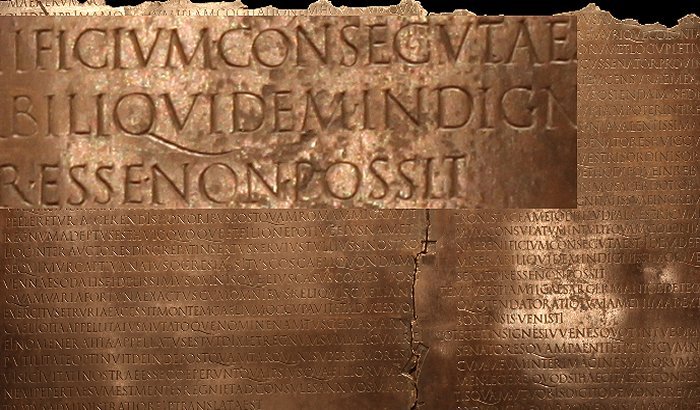 The Lyon Tablet, a bronze tablet from after AD 48. Source
The Lyon Tablet, a bronze tablet from after AD 48. Source
According to Roman legend, the Cimmerian Sibyl, Carmenta, adapted the Greek alphabet used in the Greek colony of Cumae in southern Italy, to create the Latin alphabet. The legend says that this alphabet was introduced to Latium by Evander, her son, and it took place sixty years after the Trojan War.
Officially, the Latin, (or Roman alphabet) was adapted from the Etruscan alphabet during the 7th century BC to create Latin. Since then, it had different forms, and was adapted to form many languages.
At the time of the splendor of the Roman Empire, the Latin alphabet had 23 letters. Initially, there was no letter 'W,' which was added later in the Middle Ages, and derived from two letters 'V' placed next to each other.
During the Renaissance ((14th–17th centuries), the letter 'J' began with the letter 'I,' and the letter 'U' with the letter 'V' began to budge. The introduction of lowercase letters, based on the Greek alphabet, improved the readability and speed of rewriting texts.
The most popular computer font, ‘Times New Roman’ is a derivative of the square capital. It was created in 1929 at the request of the British newspaper Times. The font was designed by Stanley Morison from Monotype. Because the newspaper publisher used the printing machinery of a competitor, Linotype, Monotype had to license it.
Linotype began advertising the font as 'Times Roman'. The font itself, though modeled on classic Roman writing, is narrower, adapted to the narrow columns of the newspaper.
Written by - A. Sutherland - AncientPages.com Senior Staff Writer
Copyright © AncientPages.com All rights reserved. This material may not be published, broadcast, rewritten or redistributed in whole or part without the express written permission of AncientPages.com
Expand for referencesReferences:
Avrin L. Scribes, Script, and Books: The Book Arts from Antiquity to the Renaissance
More From Ancient Pages
-
 5 Surprising Things DNA Has Revealed About Our Ancestors
DNA | Sep 27, 2023
5 Surprising Things DNA Has Revealed About Our Ancestors
DNA | Sep 27, 2023 -
 LIDAR Discovers Circular Iron Age Village At Cap d’Erquy, France
Archaeology | Apr 4, 2024
LIDAR Discovers Circular Iron Age Village At Cap d’Erquy, France
Archaeology | Apr 4, 2024 -
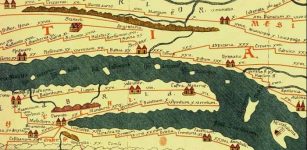 Tabula Peutingeriana: Huge Ancient Roman Map Created By Unknown Cartographer
Artifacts | Dec 14, 2018
Tabula Peutingeriana: Huge Ancient Roman Map Created By Unknown Cartographer
Artifacts | Dec 14, 2018 -
 Fabel: World’s First Archaeology Dog Helps To Unravel The Mystery Of Sandby Borg
Archaeology | May 10, 2016
Fabel: World’s First Archaeology Dog Helps To Unravel The Mystery Of Sandby Borg
Archaeology | May 10, 2016 -
 Legend Of The Four Dragons That Disobeyed The Jade Emperor And Gave China Water
Chinese Mythology | Feb 22, 2019
Legend Of The Four Dragons That Disobeyed The Jade Emperor And Gave China Water
Chinese Mythology | Feb 22, 2019 -
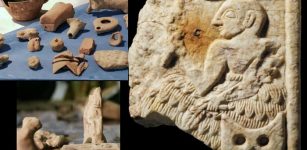 Hundreds Of Thousands Of Sumerian Artifacts Have Been Stolen From Iraq’s Museums And Archaeological Sites
Artifacts | Dec 7, 2020
Hundreds Of Thousands Of Sumerian Artifacts Have Been Stolen From Iraq’s Museums And Archaeological Sites
Artifacts | Dec 7, 2020 -
 DNA Reveals Neanderthals’ Own Blood May Have Led to Their Demise, Scientists Say
Evolution | Jan 27, 2025
DNA Reveals Neanderthals’ Own Blood May Have Led to Their Demise, Scientists Say
Evolution | Jan 27, 2025 -
 A King’s Discovery Of A Mysterious Underground World
Featured Stories | Mar 30, 2024
A King’s Discovery Of A Mysterious Underground World
Featured Stories | Mar 30, 2024 -
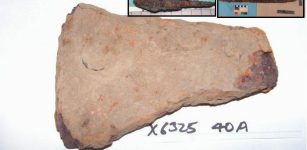 Spearheads – The Chemical Fingerprint Of Viking Weapons – New Study
Archaeology | Feb 18, 2022
Spearheads – The Chemical Fingerprint Of Viking Weapons – New Study
Archaeology | Feb 18, 2022 -
 Prehistoric ‘Cinema’ – Unique Karelian Rock Carvings With Special Light Effects
Featured Stories | Jul 14, 2014
Prehistoric ‘Cinema’ – Unique Karelian Rock Carvings With Special Light Effects
Featured Stories | Jul 14, 2014 -
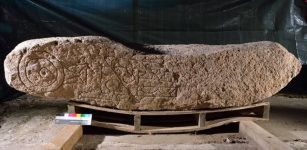 Dandaleith Stone: Scotland’s Rare Symbol Stone Of The Picts – Will It Be Deciphered Now?
Ancient Symbols | Jan 21, 2016
Dandaleith Stone: Scotland’s Rare Symbol Stone Of The Picts – Will It Be Deciphered Now?
Ancient Symbols | Jan 21, 2016 -
 Surprising Evidence Of Prehistoric Human Activity In Falkland Islands – Europeans Were Not The First Settlers
Archaeology | Oct 29, 2021
Surprising Evidence Of Prehistoric Human Activity In Falkland Islands – Europeans Were Not The First Settlers
Archaeology | Oct 29, 2021 -
 Astronomically Aligned Temples And Pyramids Of Ancient World
Featured Stories | Dec 10, 2021
Astronomically Aligned Temples And Pyramids Of Ancient World
Featured Stories | Dec 10, 2021 -
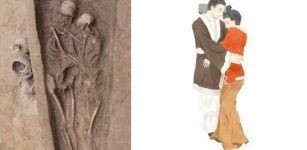 1,500-Year-Old Joint Burial Offers A Look Into Attitudes Toward Love And The Afterlife
Archaeology | Sep 14, 2021
1,500-Year-Old Joint Burial Offers A Look Into Attitudes Toward Love And The Afterlife
Archaeology | Sep 14, 2021 -
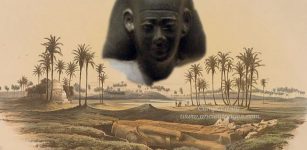 Pharaoh Apries – Was The Betrayed Egyptian King Murdered By His Own People?
Featured Stories | Jun 30, 2021
Pharaoh Apries – Was The Betrayed Egyptian King Murdered By His Own People?
Featured Stories | Jun 30, 2021 -
 Mother, Father, Child, Marriage And Divorce In Viking Society
Ancient History Facts | Apr 27, 2020
Mother, Father, Child, Marriage And Divorce In Viking Society
Ancient History Facts | Apr 27, 2020 -
 DNA Breakthrough – New Human Gene Cluster Sequence Discovered
Evolution | Nov 24, 2023
DNA Breakthrough – New Human Gene Cluster Sequence Discovered
Evolution | Nov 24, 2023 -
 Advanced Ancient Irrigation Network Discovered In Mesopotamia
Archaeology | Mar 12, 2025
Advanced Ancient Irrigation Network Discovered In Mesopotamia
Archaeology | Mar 12, 2025 -
 Fossils In The ‘Cradle Of Humankind’ May Be More Than A Million Years Older Than Previously Thought
Archaeology | Jun 28, 2022
Fossils In The ‘Cradle Of Humankind’ May Be More Than A Million Years Older Than Previously Thought
Archaeology | Jun 28, 2022 -
 Dangerous Magnetic Anomaly And Unexplained Events In Mysterious And Dark Valley Trouble Scientists – Why Must The Stone Gate Not Be Crossed?
Featured Stories | Nov 7, 2024
Dangerous Magnetic Anomaly And Unexplained Events In Mysterious And Dark Valley Trouble Scientists – Why Must The Stone Gate Not Be Crossed?
Featured Stories | Nov 7, 2024
